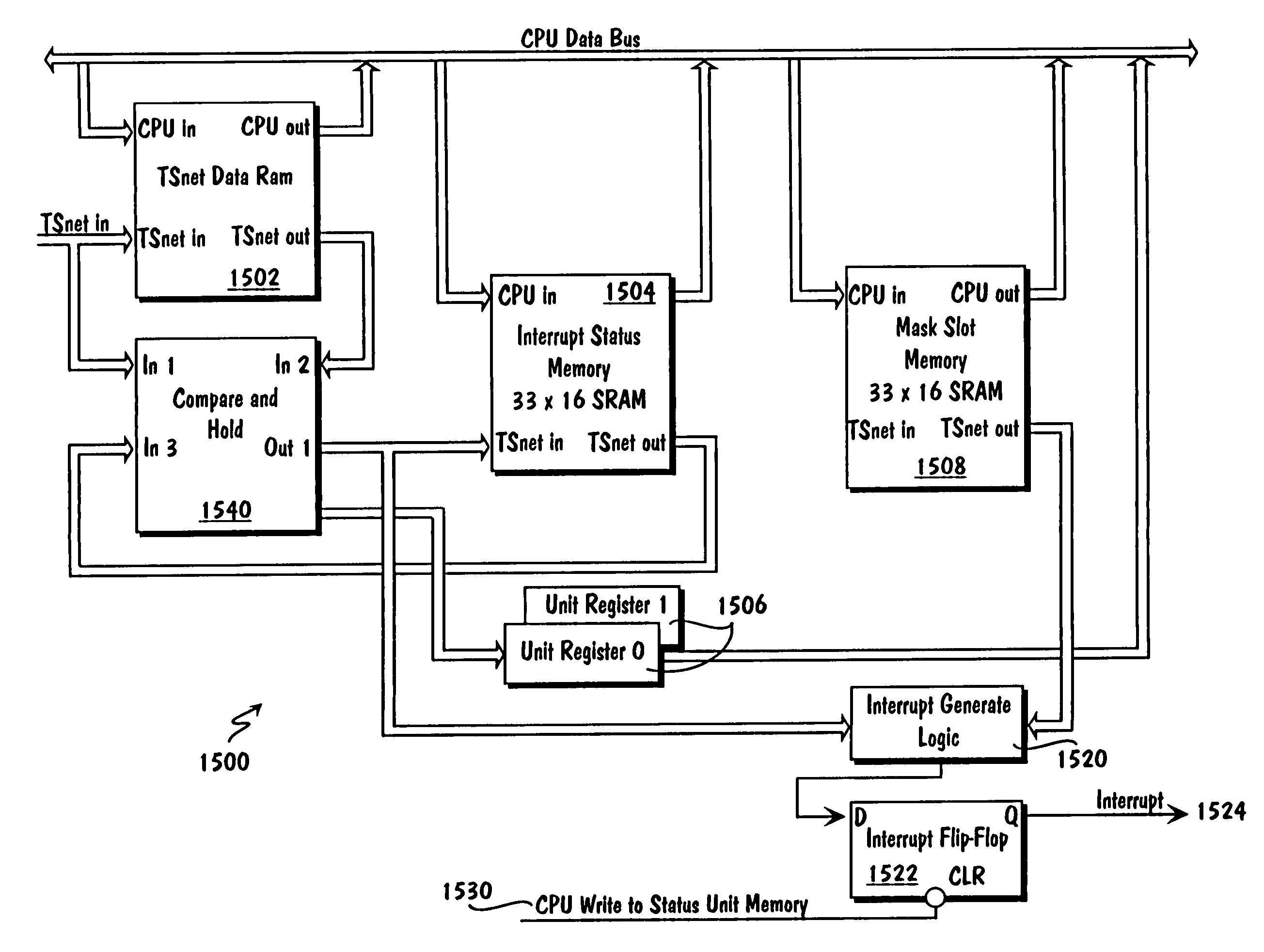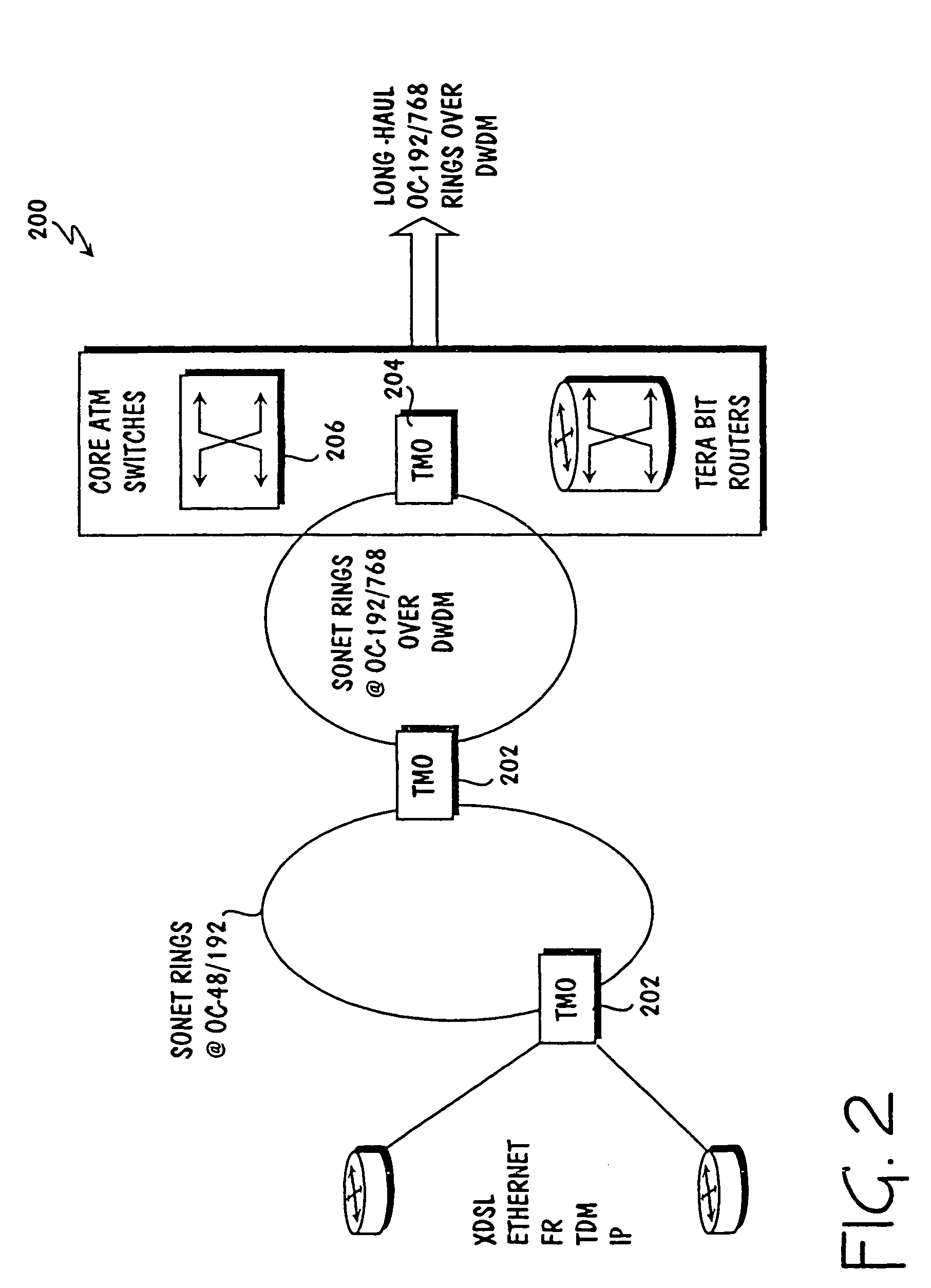Interface transmitter for communications among network elements
a network element and interface technology, applied in the field of synchronous optical network (sonet) technology, can solve the problems of switching event detection and propagation problem further compounded, time allowed for propagation of switching event information among network elements is limited to a total of 50 milliseconds, and achieve the effect of avoiding delays associated with data collisions
- Summary
- Abstract
- Description
- Claims
- Application Information
AI Technical Summary
Benefits of technology
Problems solved by technology
Method used
Image
Examples
Embodiment Construction
[0046]The Trans-Metro Optical (TMO) switch system of an embodiment uses a non-binding architecture that includes integrating discrete subsystems including SONET network elements with a backplane and interchangeable line cards. In addition to performing digital cross-connect (DCS) and add-drop multiplexer (ADM) functions with a common card, the TMO switches support the typical packet and circuit transport protocols. Packet support encompasses asynchronous transfer mode (ATM) service access multiplexers / switches, frame relay (FR) access switches, and multi-protocol label and internet protocol (IP) (MPLS / IP) switches. Circuit switching support is provided for voice and private line point-to-point circuits. Consequently, the TMO switch provides a data optimized SONET platform which integrates SONET ADMs, DCSs and ATM / FR switch functionality into a single platform.
[0047]The typical metropolitan area network (MAN) hierarchy is a mix and match of SONET sub-networks, subsystems, protocols, ...
PUM
 Login to View More
Login to View More Abstract
Description
Claims
Application Information
 Login to View More
Login to View More - Generate Ideas
- Intellectual Property
- Life Sciences
- Materials
- Tech Scout
- Unparalleled Data Quality
- Higher Quality Content
- 60% Fewer Hallucinations
Browse by: Latest US Patents, China's latest patents, Technical Efficacy Thesaurus, Application Domain, Technology Topic, Popular Technical Reports.
© 2025 PatSnap. All rights reserved.Legal|Privacy policy|Modern Slavery Act Transparency Statement|Sitemap|About US| Contact US: help@patsnap.com



